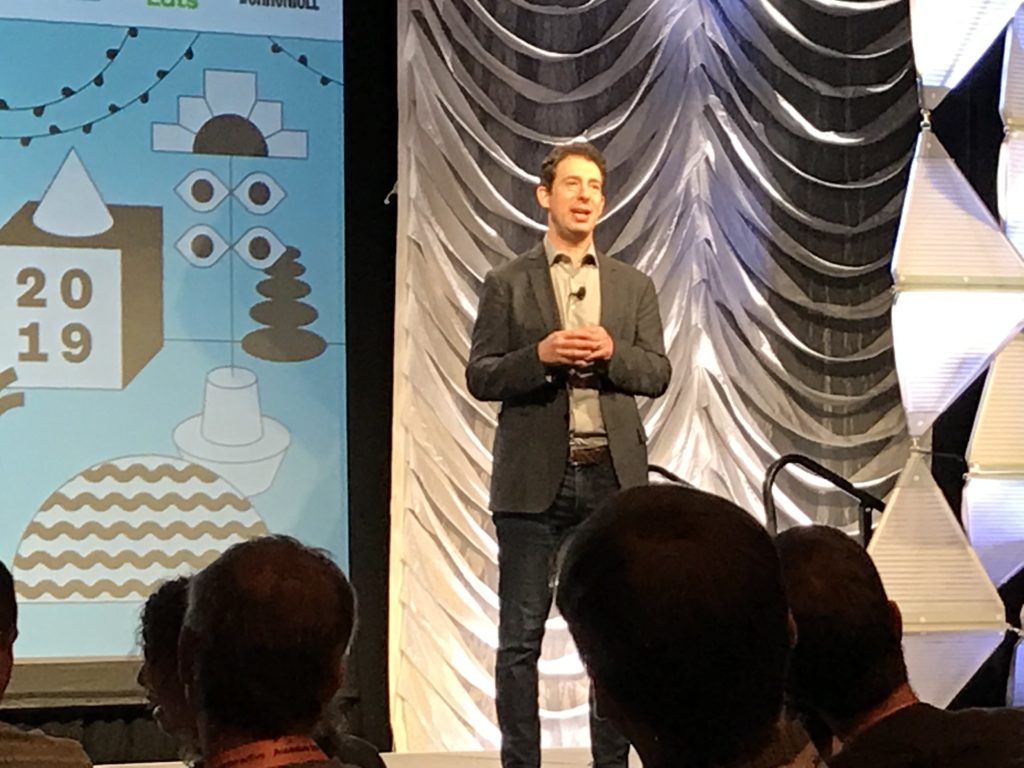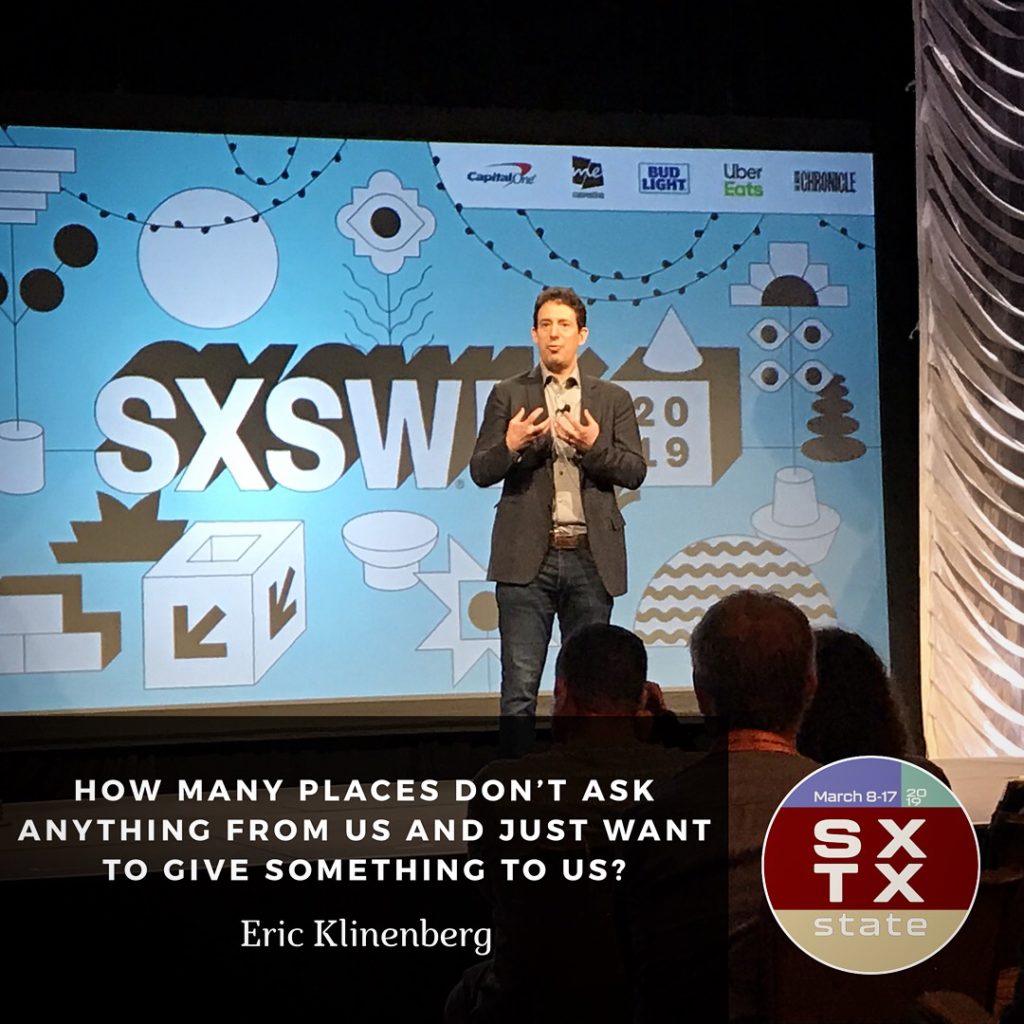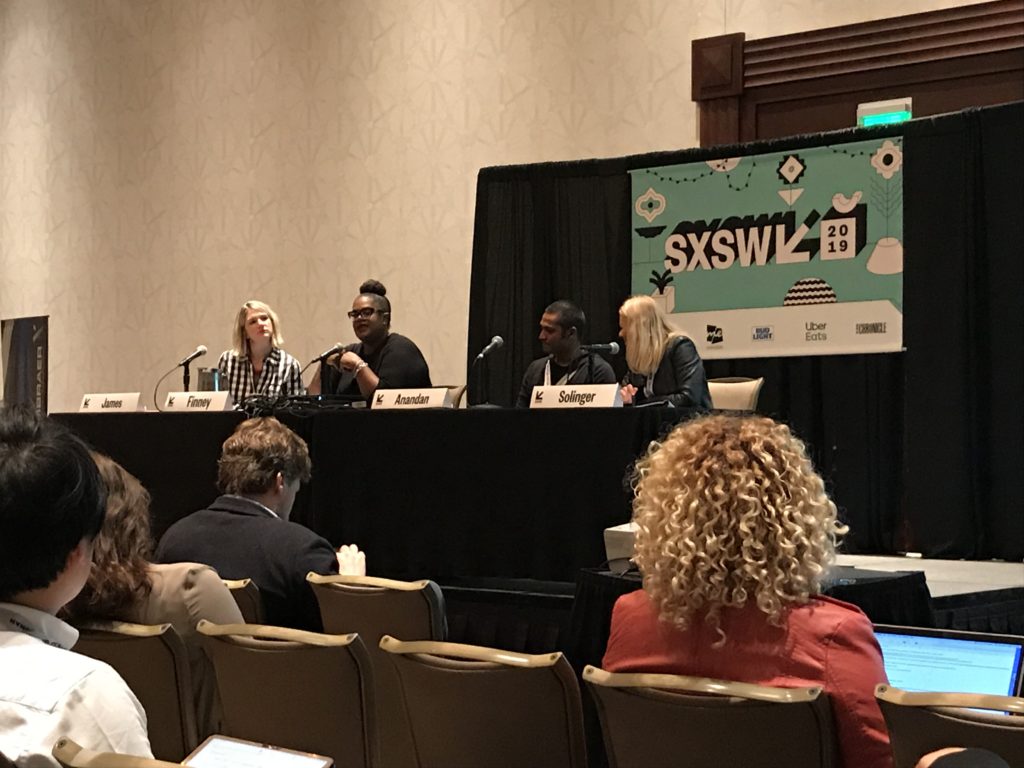When thinking about how infrastructure grows within the social impact framework, designing technology and spaces for those who are underrepresented in society is important. Particularly as it relates to social infrastructure and serving those who are below the poverty line. The two sessions below address different topics but both sessions build upon the need for social impact within technology to be an equalizer rather than a divider.
Palaces for the People with Eric Klinenberg

In Eric Klinenberg’s book, Palaces for the People, Klinenberg talks about his research on the importance of social infrastructure and how this bridges the gap between inequality, divisiveness, and polarization. This session dove into a high-level overview of his book and really what it means to invest our resources and energies into public spaces. Klinenberg references the value of the library and what this space means to so many.
Klinenberg talked about his daughter and how they went into one store with all its high priced items and latest technology and within 15 minutes of being inside, his daughter requested over $20,000 worth of merchandise. He then took his daughter to the library and everything she asked for, the answer will always be yes. Klinenberg stressed the need is there and it is important that we create spaces where people are interacting with one another and through this interaction, it generates familiarity and community
Klinenberg went on to talk about a wall analogy. Two words that no one in the audience wanted to say, “the wall.” He used a reference to Superstorm Sandy which devastated parts of New York City back in 2012. When thinking about re-building, the idea was brought up about building a wall around lower Manhattan to help keep the water out. The issue with this is that now the problem becomes an issue for New Jersey, if New Jersey builds a wall, it then becomes an issue for Maryland, and at what point does it stop before it becomes another states problem?

Social infrastructure is the same way, rather than building a wall, create a space for people to come together, share ideas and have a sense of community. It is important to remember that these ideas were generated years ago and we inherited its acceptance in society. Klinenberg said, “it’s worth using our shared resources to build upon those kinds of ideas.” Towards the end of his presentation, he talked about what if the concept of a library did not exist before and what if you went to the current administration to pitch this idea. A public space with books, music, movies, computers, innovation, a staff, and its all free to the people! Remember the focus should be placed on building our social infrastructure, fostering these spaces. Walls do not create community.
Can the Tech Industry Disrupt Poverty?

Flipping the conversation to more technology innovations, in Can the Tech Industry Disrupt Poverty? Speakers came together to discuss how technology can either enable or help defunct poverty in America. Moderated by Jessica James, this session brought together Kathryn Finney, Editor-at-Large for BlogHer, Rajesh Anandan from UNICEF Kid Power, and Diane Solinger from Google.
This panel focused on the need for design that represents the people who live below the poverty line. Design and technology tends to leave out various groups and the need to bring in those with less resources than those who can afford the latest $1,000 iPhone is important. While it may not solve for poverty, it can help bring out kindness and make sure a marginalized group of individuals are given the resources they deserve too. Finney, someone who grew up in poverty in Milwaukee, makes the point, “human centered design – impacts humans. You forget that there is a human element to the technology.”
Designing products and technology around humans and those that face poverty or hard times is key. An example was made by Solinger regarding veterans. When veterans are entering the workforce, they have a hard time translating the skills they learned in the military to useable skills to land a civilian job. An example of a solution would be to design an app that translates military skills into skills that employers would find desirable in the workforce. Again, this brings it back to this idea of designing for all humans and what this social impact entails.
Kathryn Finney
Human centered design – impacts humans. You forget that there is a human element to the technology.
Anandan brought up a point during the session around inclusion. He stated, “inclusion is this very fuzy thing, when really it’s at the heart of someone getting job and their foot in the door.” Designing these simple tools, as Anandan talks about, allow us to be more accountable. Finney goes on to talk about how being poor in America you are treated as the lowest thing on the food chain. A slew of judgements are made about you and for tech to be used as a solution, it has to recognize this value judgement. Tech companies and those who are designing these products have to look at all communities and social classes as equals.
While this session did not solve the problem of poverty through tech nor did Palaces for People give ideas for creating more public spaces, both sessions kept the conversation moving forward. Solving for social issues where tech can be an equalizer rather than a divider is an important attribute to our society and to our infrastructure as a whole. SXSW is about bringing people together to keep these conversations alive, build bridges between industries, and bring about new ideas to innovate for social impact.

Comments are closed, but trackbacks and pingbacks are open.